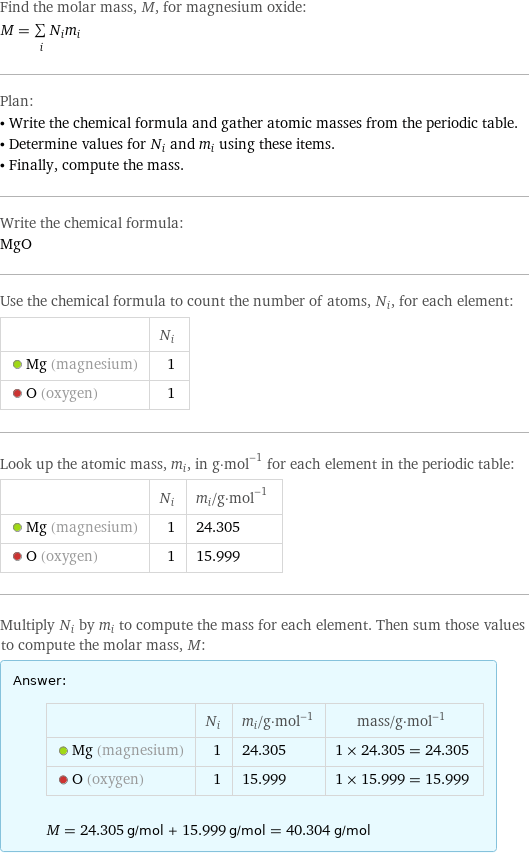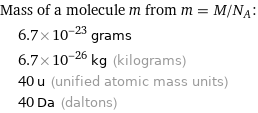Input interpretation

magnesium oxide | molar mass
Result

Find the molar mass, M, for magnesium oxide: M = sum _iN_im_i Plan: • Write the chemical formula and gather atomic masses from the periodic table. • Determine values for N_i and m_i using these items. • Finally, compute the mass. Write the chemical formula: MgO Use the chemical formula to count the number of atoms, N_i, for each element: | N_i Mg (magnesium) | 1 O (oxygen) | 1 Look up the atomic mass, m_i, in g·mol^(-1) for each element in the periodic table: | N_i | m_i/g·mol^(-1) Mg (magnesium) | 1 | 24.305 O (oxygen) | 1 | 15.999 Multiply N_i by m_i to compute the mass for each element. Then sum those values to compute the molar mass, M: Answer: | | | N_i | m_i/g·mol^(-1) | mass/g·mol^(-1) Mg (magnesium) | 1 | 24.305 | 1 × 24.305 = 24.305 O (oxygen) | 1 | 15.999 | 1 × 15.999 = 15.999 M = 24.305 g/mol + 15.999 g/mol = 40.304 g/mol
Unit conversion

0.040304 kg/mol (kilograms per mole)
Comparisons

≈ ( 0.056 ≈ 1/18 ) × molar mass of fullerene ( ≈ 721 g/mol )

≈ ( 0.21 ≈ 1/5 ) × molar mass of caffeine ( ≈ 194 g/mol )

≈ 0.69 × molar mass of sodium chloride ( ≈ 58 g/mol )
Corresponding quantities

Mass of a molecule m from m = M/N_A: | 6.7×10^-23 grams | 6.7×10^-26 kg (kilograms) | 40 u (unified atomic mass units) | 40 Da (daltons)

Relative molecular mass M_r from M_r = M_u/M: | 40